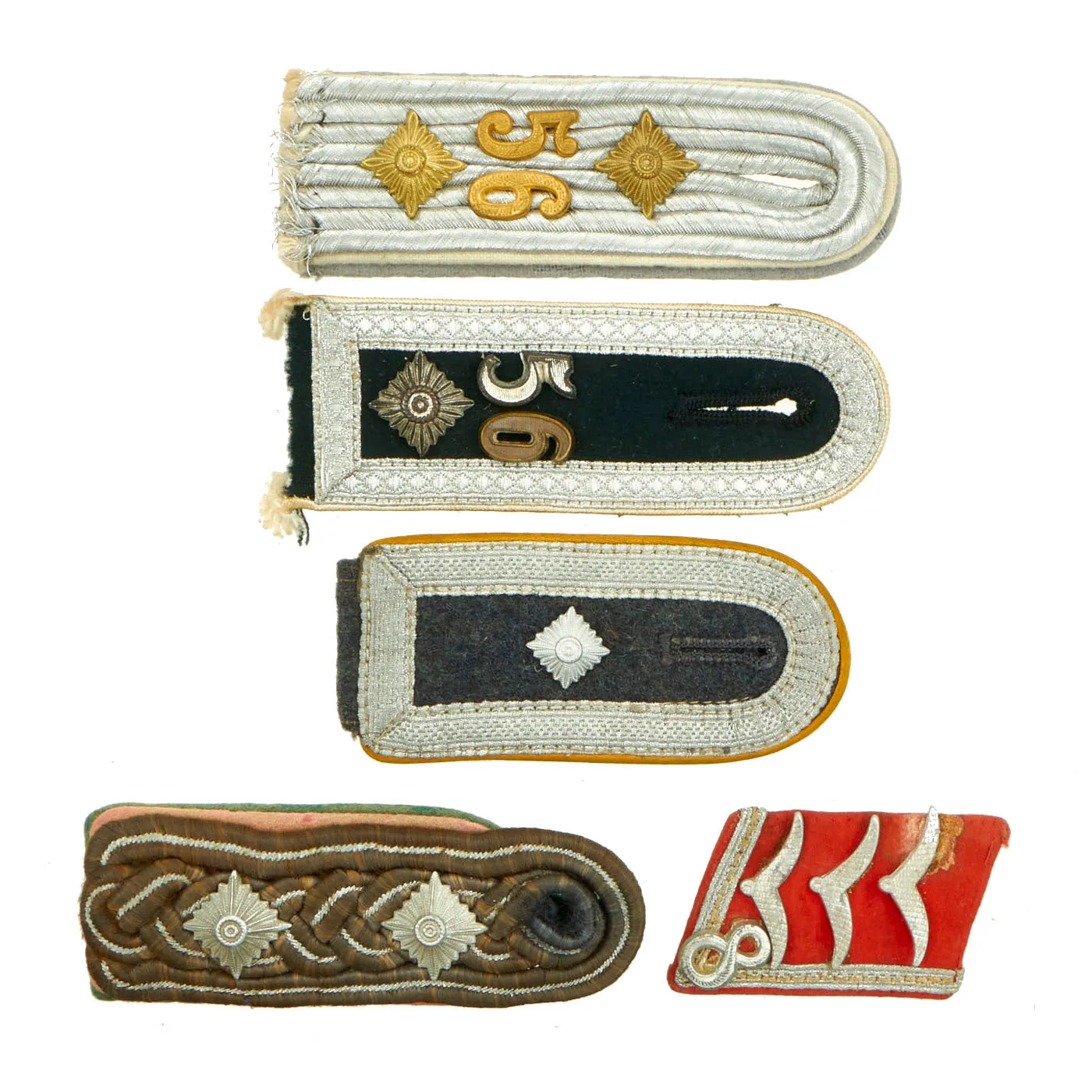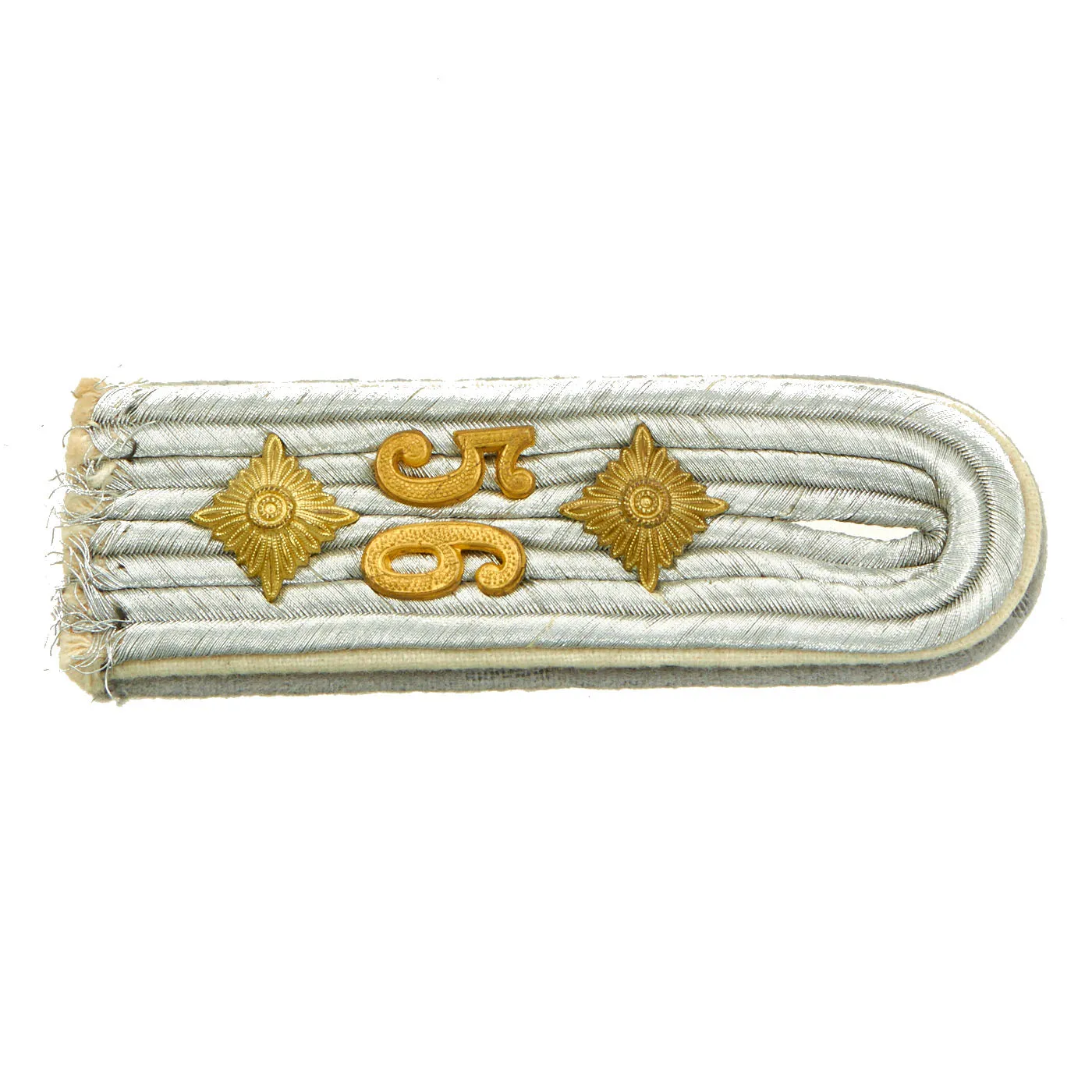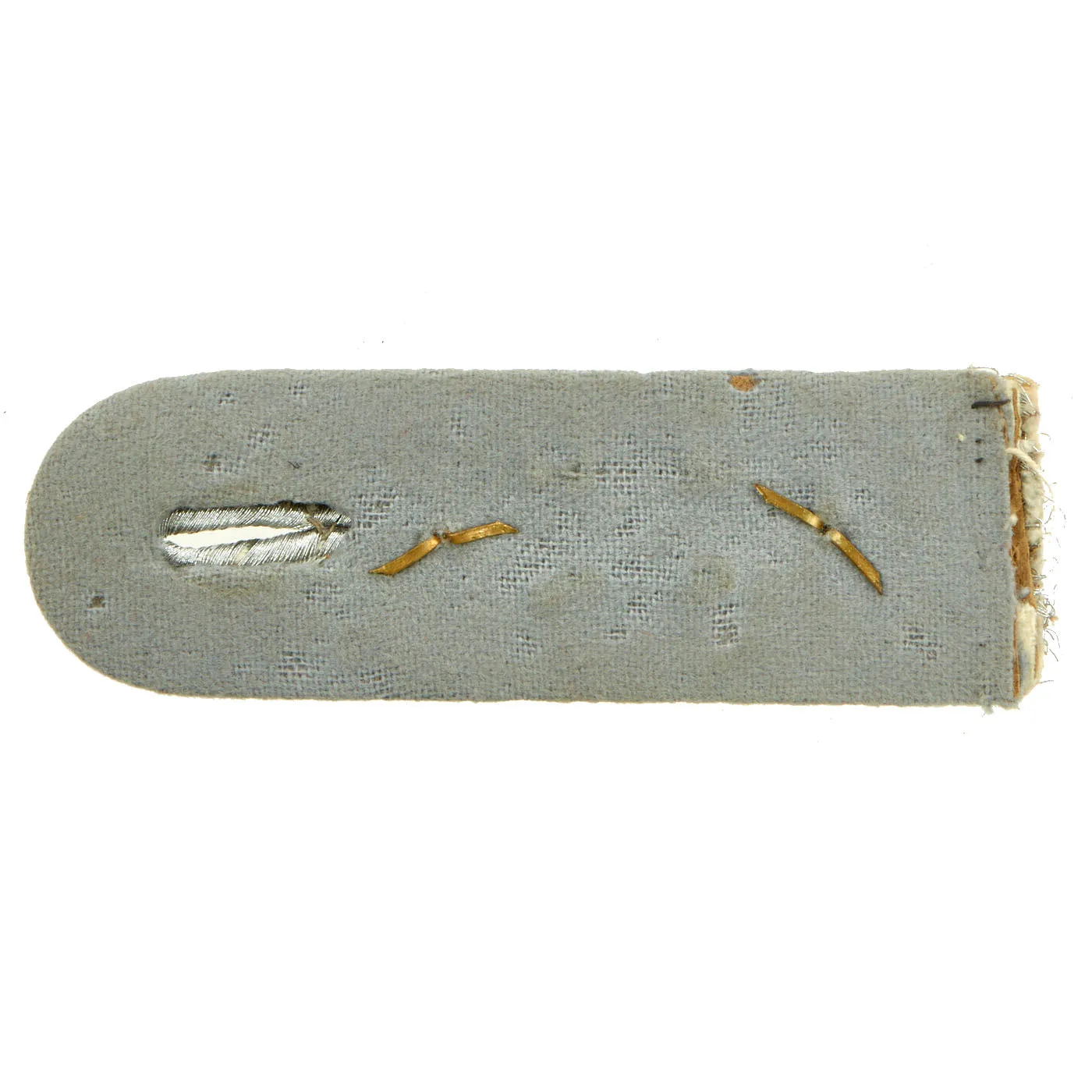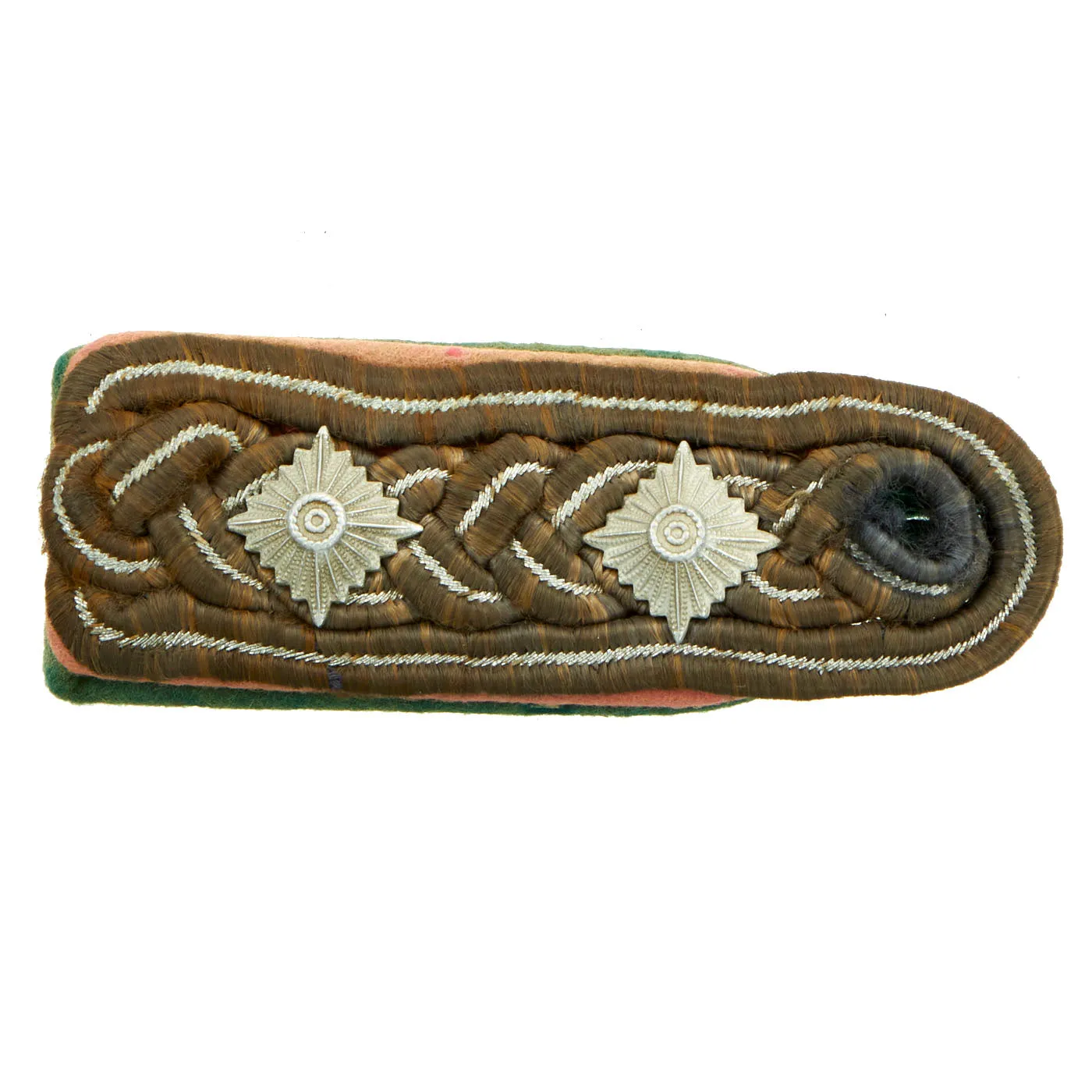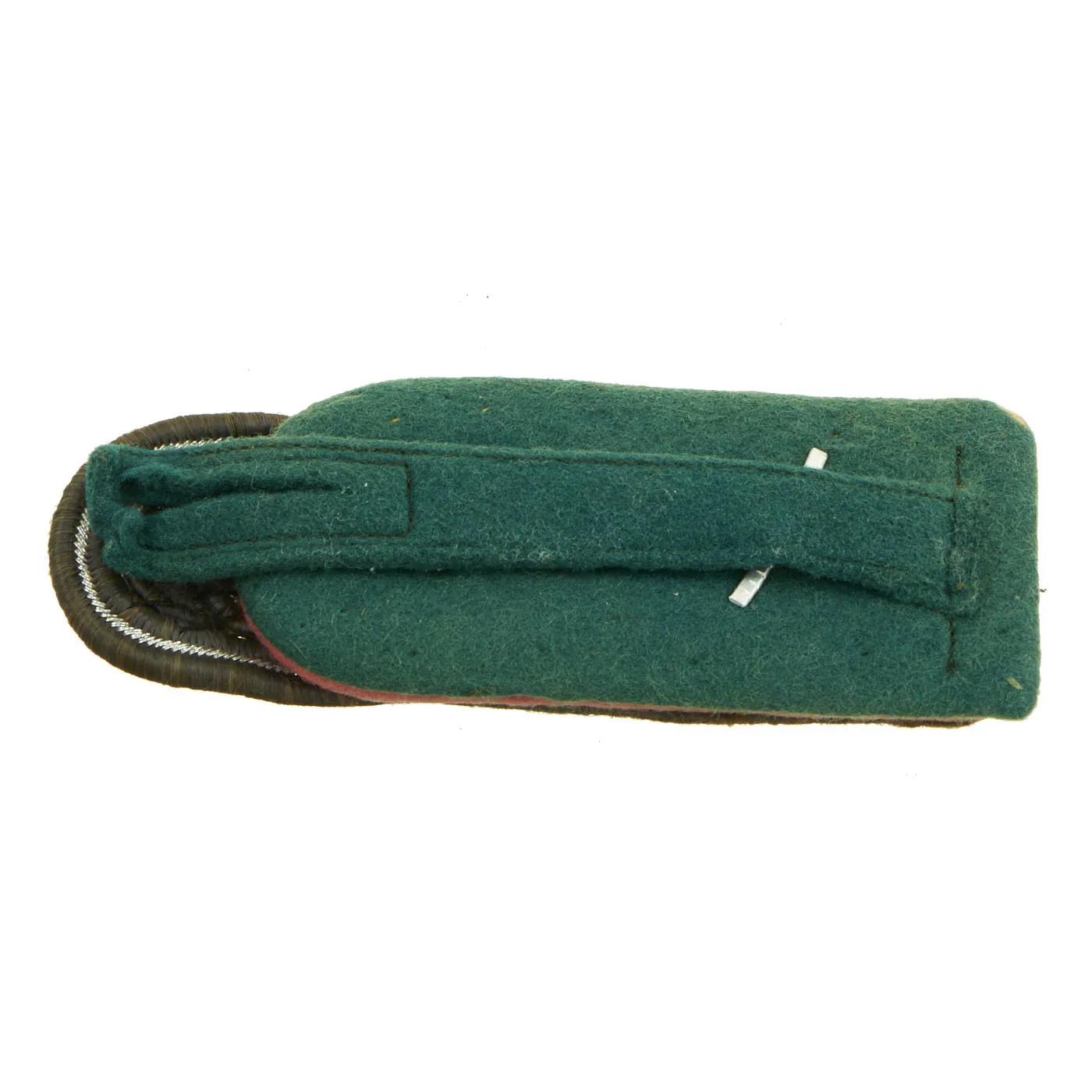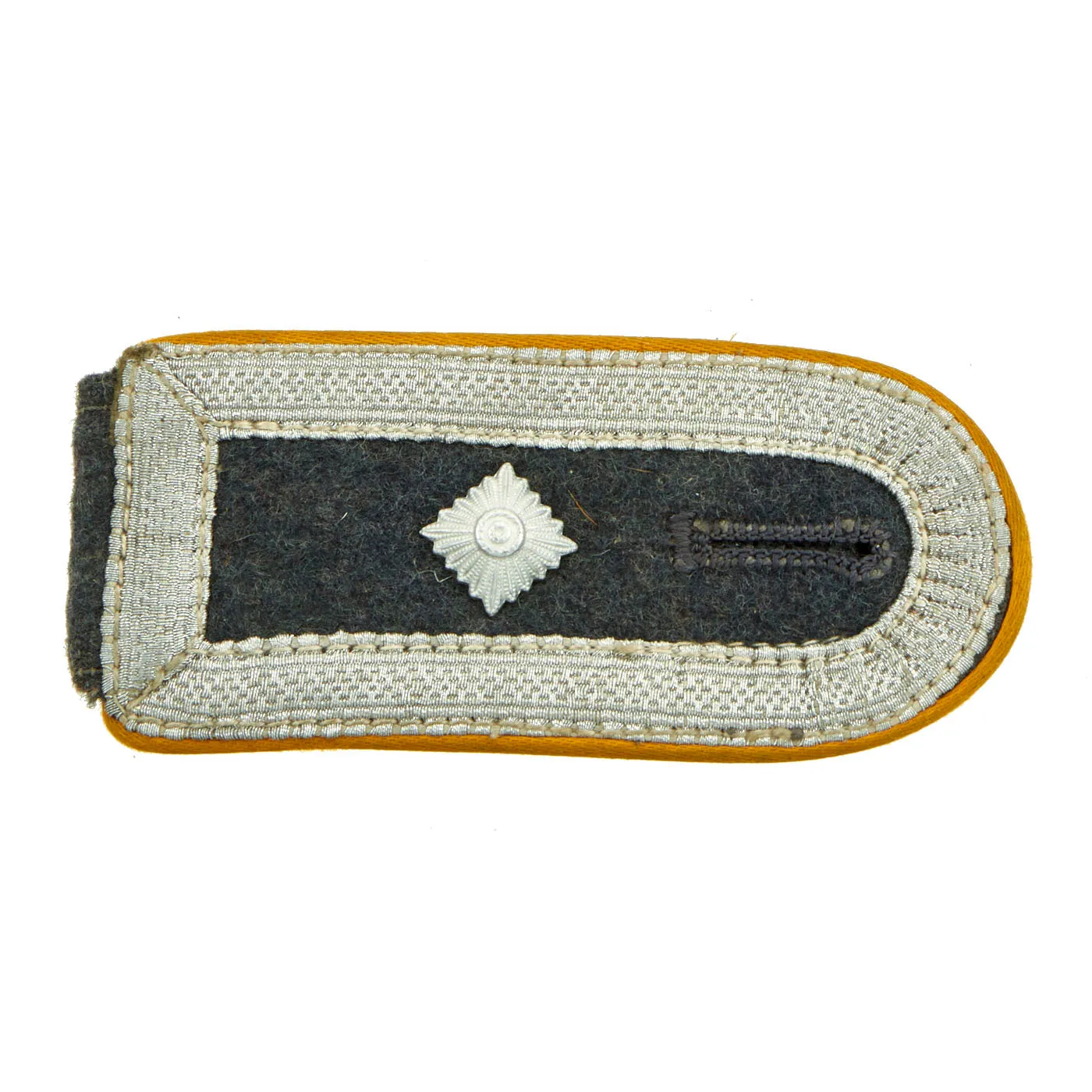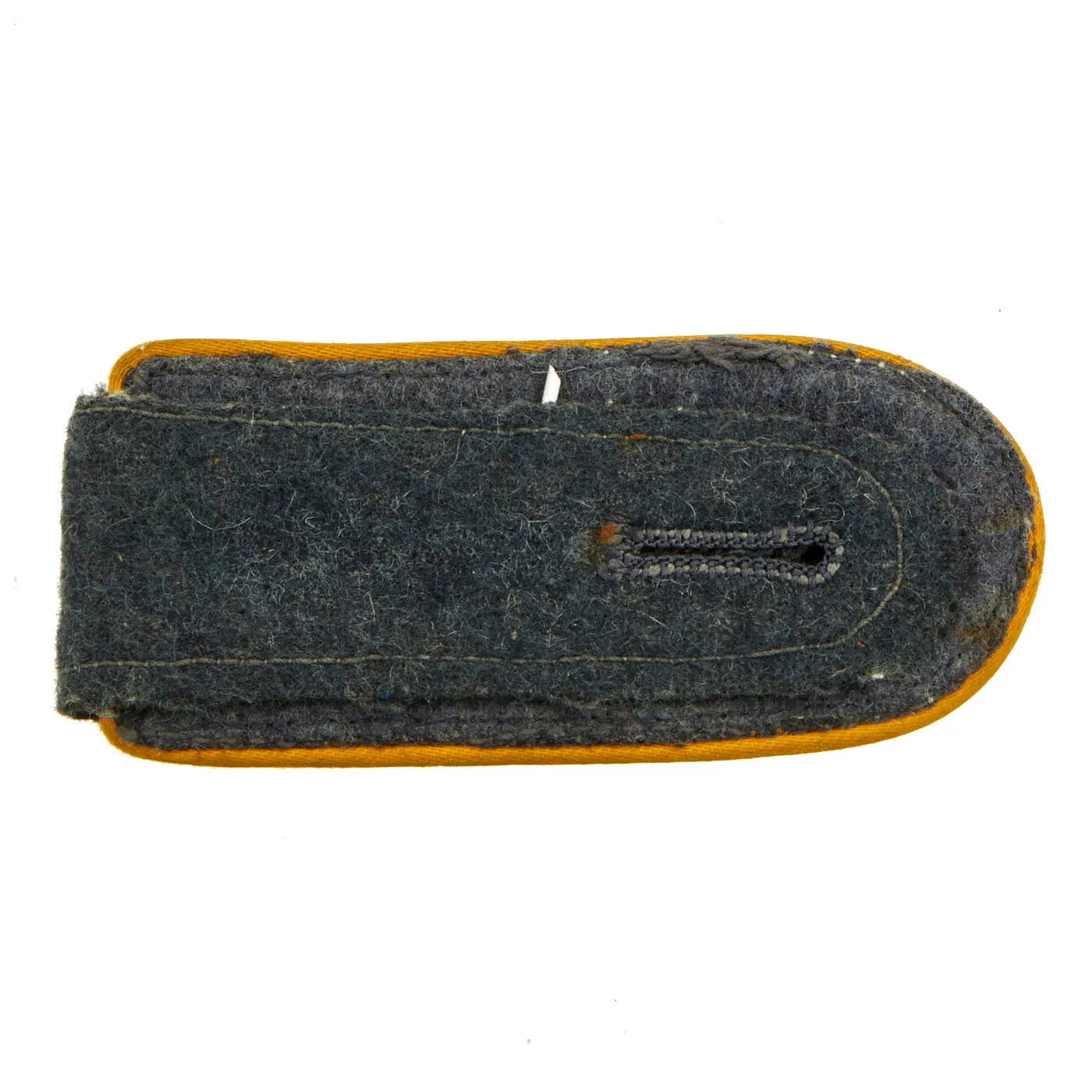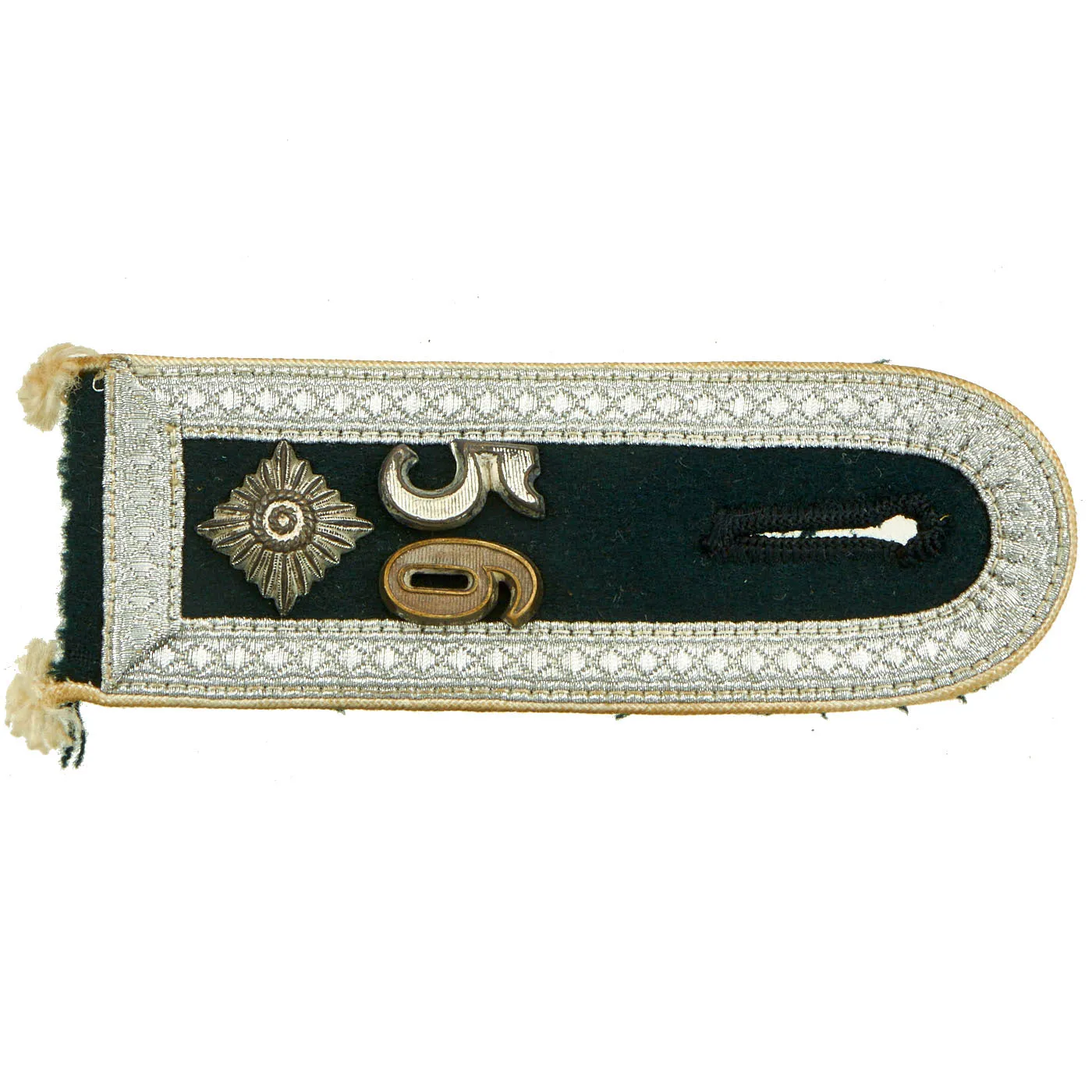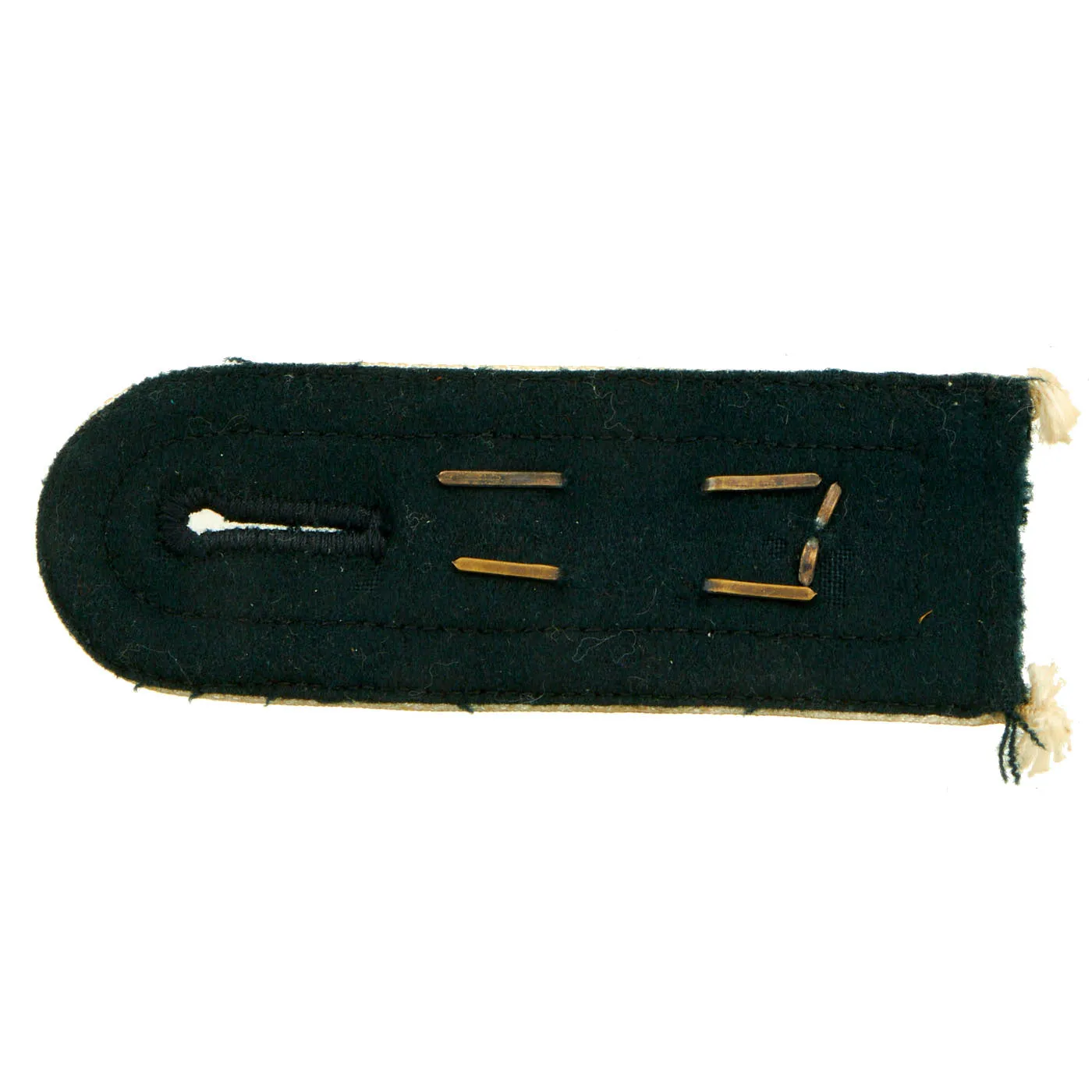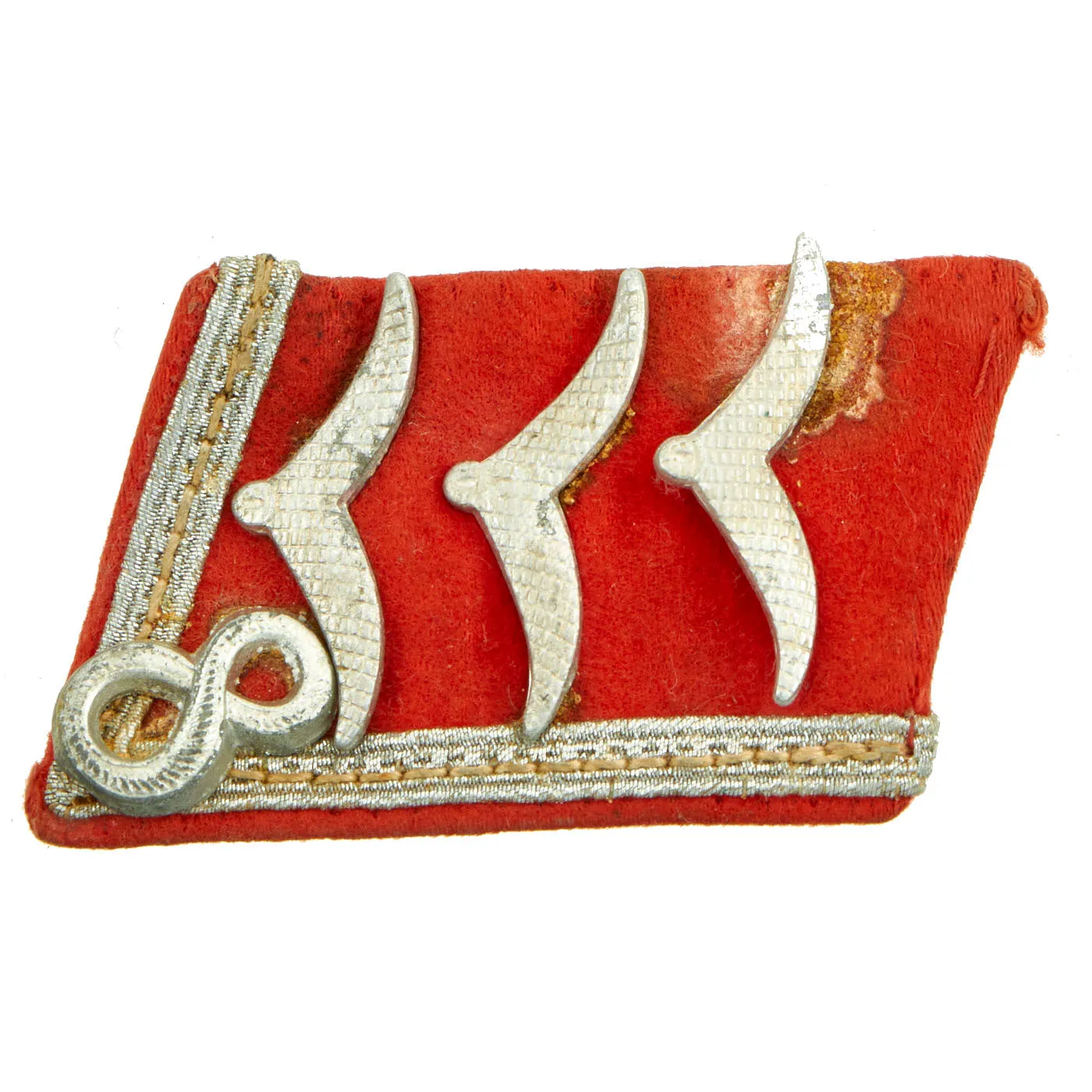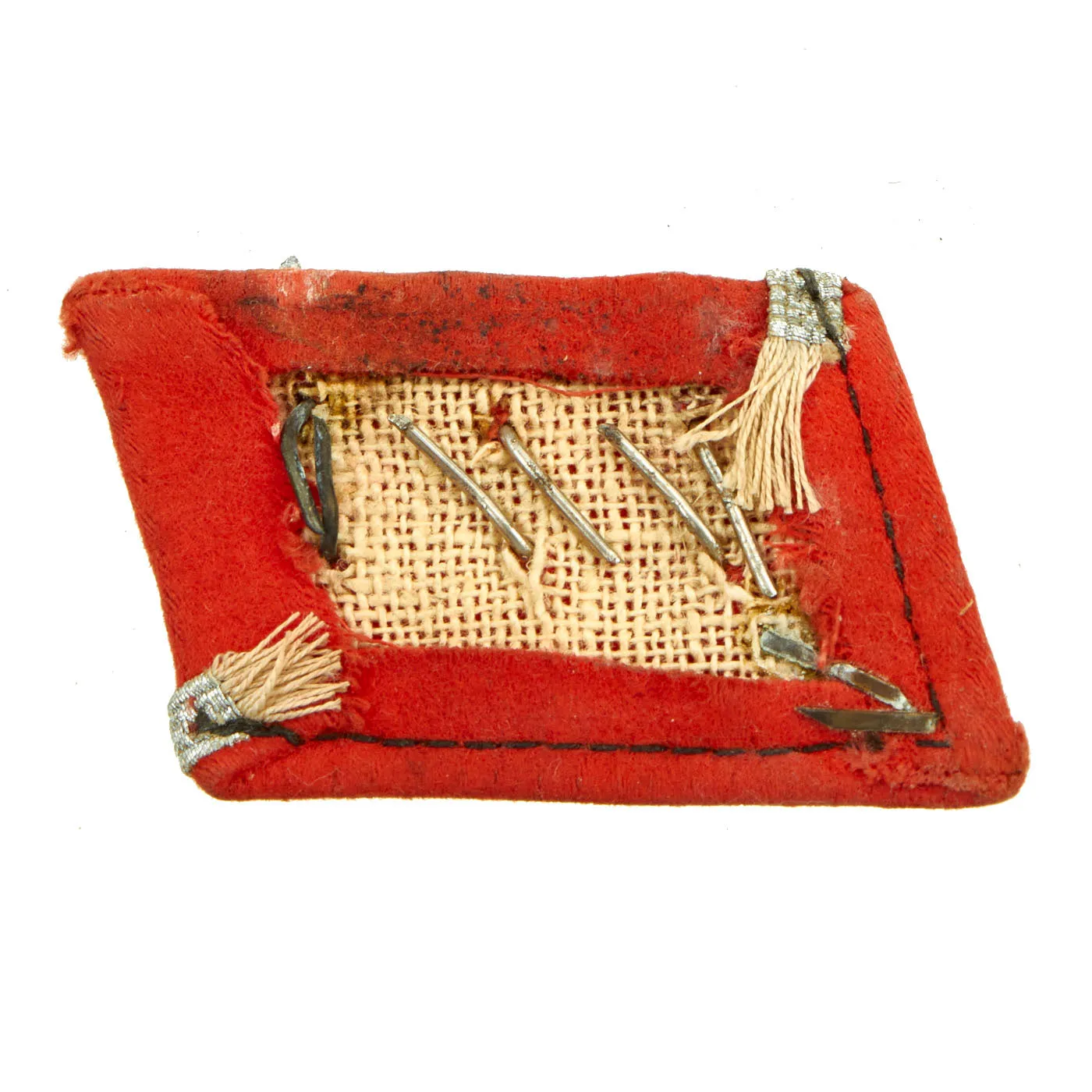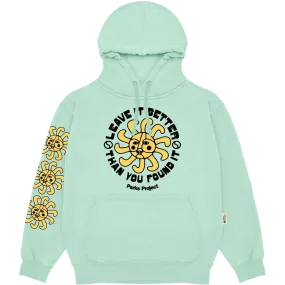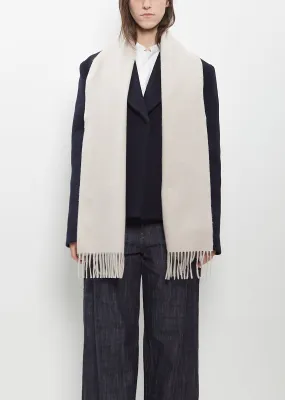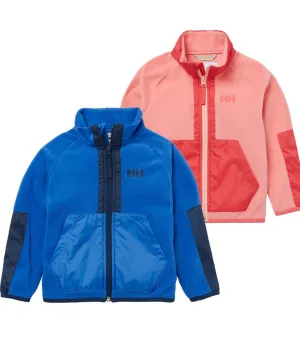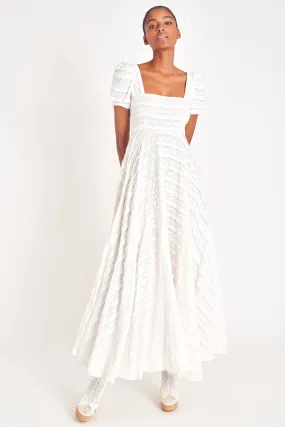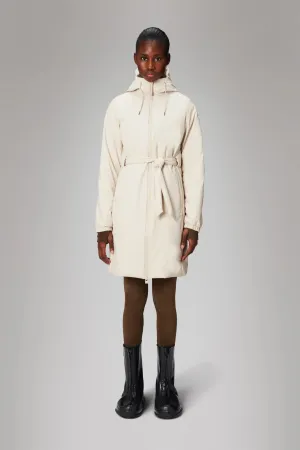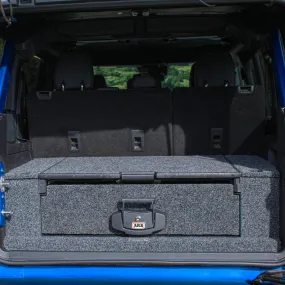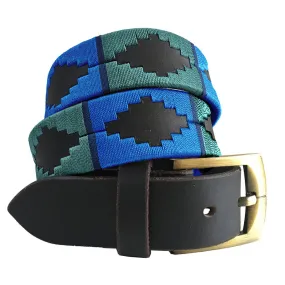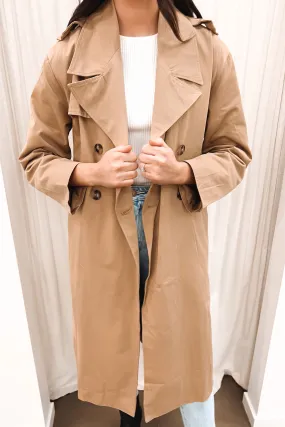Original Items: Only One Lot of 5 Available. This is a very nice set of German Schulterstücken (Shoulder Boards), made up of 4 WWII issue examples, and a 1 Luftwaffe collar tab. The designs changed somewhat during the course of the war, and the many different corps colors can sometimes make them hard to identify. This is especially true of Imperial German shoulder boards, which often varied state to state.
Most likely brought home by a US Soldier after the war, as they were very popular collectors items, with a wide variety of colors and designs.
This very nice set consists of the following:
- HEER Army Panzer Officer: The shoulder board consists of the Russian braid with silver accent on a pink wool base which is then on the field green wool base. The board features 2 rank pips for a Colonel.
- HEER Army Infantry NCO: The shoulder board consists of the “chain” pattern silver border with a white piping on a bottle green wool background. The board features a single rank pip and the number 56 for a Sergeant in the 56th Infantry Division.
- HEER Army Infantry Officer: Lovely silver bullion thread with a white piping on a light gray wool background. The board features 2 rank pips and a 56 for a Captain serving in the 56th infantry division.
- Luftwaffe NCO: Lovely gray wool base with a silver border and a yellow piping around the edge. There is a single rank pip for a feldwebel.
- Luftwaffe Flak NCO Collar Tab: The tab is red with a silver bullion corner border. There are 3 “birds” representing a feldwebel and a number 8 for the 8th air corps.
These are all lovely examples that come ready for further research and display!
Shoulder-straps (Schulterklappen) and shoulder boards (Schulterstücke)
Enlisted Men
The Reichsheer's shoulder-straps to enlisted men (German: Mannschaften) were very similar to those of World War I, made of feldgrau uniform cloth with pointed or "gable" button ends. In December 1934 the material was changed to grey badge-cloth (Abzeichentuch) and in September 1935 changed again to dark bottle-green (flaschengrün). These "first pattern" shoulder-straps were not edged in Waffenfarbe piping.
In 1938, simultaneous with the removal of Waffenfarbe from field-uniform collar patches, new shoulder-straps were issued. These "second pattern" straps had round rather than pointed ends, and were edged on three sides with wool (later rayon) piping in Waffenfarbe. This pattern would be used through the end of the war, although in 1940 manufacture reverted to field-grey uniform cloth, and as usual alternate versions were made to go with the Panzer uniform (black), tropical uniform (olive cotton) and HBT summer uniform (reed-green twill). Schulterklappen were not worn with the fatigue uniform, nor with camouflage smocks and parkas which used an alternate system of rank insignia.
For junior enlisted men (Mannschaften), rank insignia if any was worn on the left sleeve. However the epaulettes did indicate the wearer's unit (usually regiment or independent battalion) together with his sub-branch if any, machine-embroidered in branch-color. For example, a Schulterklappe with rose-pink piping and number "4" would indicate the 4th Panzer Regiment; but if it carried a pink number "4" and letter "A" it would indicate the 4th Armored Reconnaissance (Aufklärungs) Battalion. The German Army used a very large assortment of Latin initials, Gothic initials, script ciphers, Arabic numerals, Roman numerals and symbols to designate all its various service branches and installations. Before the war, shoulder-buttons were embossed with the number of the wearer's company as well, this practice was discontinued "for the duration."
Beginning in January 1940, shoulder-straps with unit insignia were (supposed to be) phased out as a security measure, and removable fabric loops with devices were issued instead. In May 1944 the embroidery was changed from waffenfarbe to light gray.
NCOs
Non-commissioned officers (de: Unteroffiziere) wore their rank insignia on their shoulder-straps, consisting of braid and white-metal rank stars. An Unteroffizier's epaulette was edged with Tresse on three sides and an Unterfeldwebel's on all four. Senior NCO's (Unteroffiziere mit Portepee) added one to three stars; in addition, their unit identifiers took the form of white-metal insignia rather than embroidery.
Shoulder-straps were made in both a standard width (4.5 cm, 1¾") and a wider one for three-digit unit numbers (5.3 cm, 2"), and in three lengths depending on the size of the man. There was in addition an extra-large size for the overcoat (Mantel).
Officers
Officers' shoulder boards were constructed from "Russia" braid, an aluminum-thread double piping. Company-grade officers (Leutnant through Hauptmann/Rittmeister) wore epaulets constructed by wrapping two side-by-side lengths of braid around the buttonhole and back, giving the appearance of eight parallel cords; the whole was sewn to an underlay (Unterlagen) of Waffenfarbe badge-cloth. Until 1938 the underlay was of the same outer dimensions as the braid, and only visible edge-on; in that year the underlay was made wider, so as to create the impression of edge piping like the enlisted shoulder-strap. Rank was indicated by zero to two gilt-metal rank stars; unit designators were also of gilt metal.
Field-grade officer (Stabsoffizier) shoulder boards were made by plaiting together double widths of Russia braid and looping them to form a buttonhole, sewn to a Waffenfarbe underlay; rank again was displayed by zero to two gilt stars.
Once the war began, dull grey aluminum braids appeared, but bright aluminum continued in use.
Generals
Generals' shoulder boards were constructed similarly to those of field-grade officers, but comprised a length of silver Russia braid between two braided cords of gold bullion or Celleon. Since the resulting combination was wider, generals' boards were plated in four 'loops' rather than five. Their buttons were gilt, and rank was indicated by zero to three silver rank stars, or crossed batons in the case of field marshals. The underlay was scarlet, except (from 1944) for generals of staff corps, who were instructed to wear Waffenfarbe instead.
In April 1941, Generalfeldmarschall epaulets were changed to incorporate a central gold cord instead of silver.
Colonels-in-chief wearing that uniform wore gold generals' shoulder boards underlaid with the Waffenfarbe of the regiment rather than scarlet; GFM von Rundstedt sometimes simply pinned his crossed batons to an infantry colonel's epaulets.

